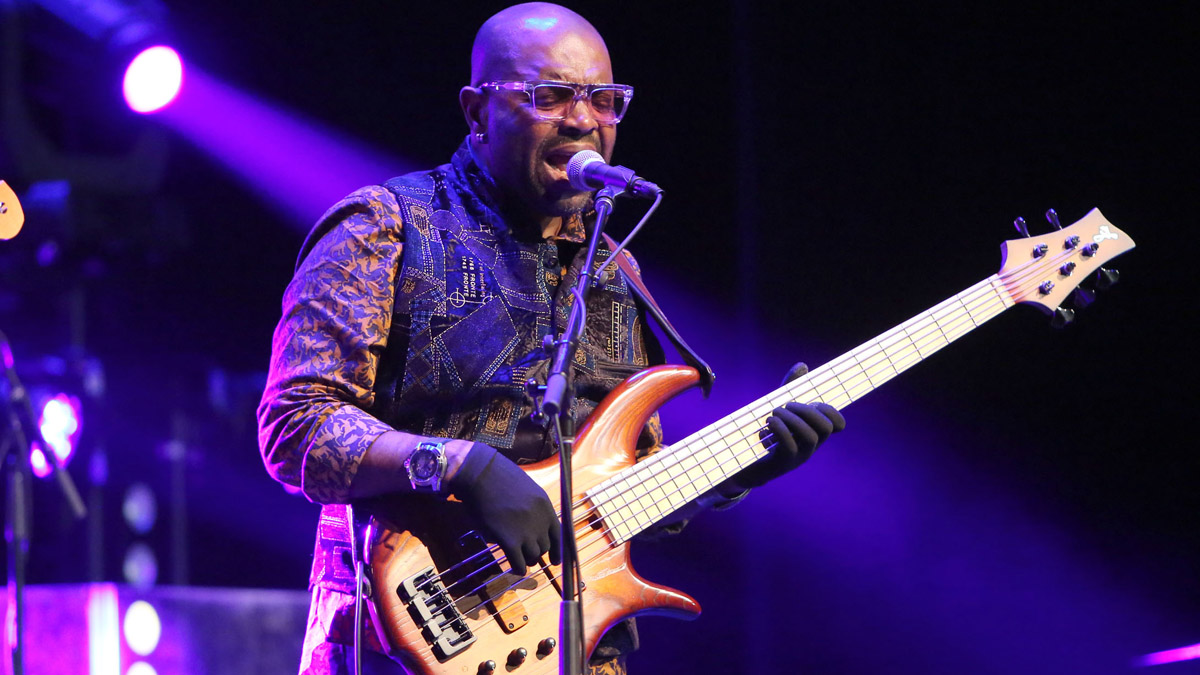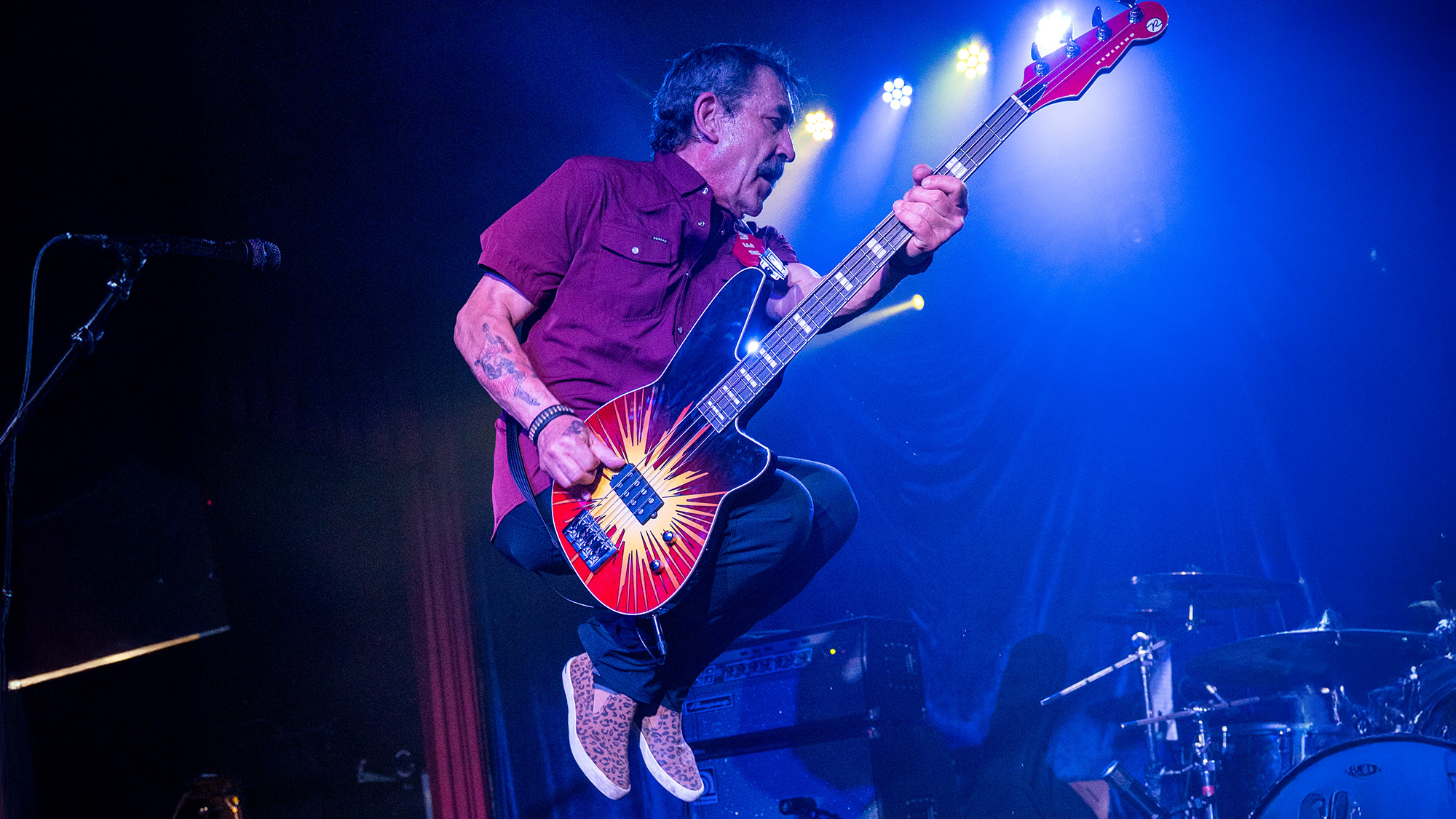Etienne Mbappé: “I want to make people dance. I want to see people swing. If you can do that, you’re a great bass player”
Mbappé shares his playing philosophy, talks influences and explains the benefits of a large bass collection

According to Etienne Mbappé, the criterion that makes for a good rhythm section is non-negotiable. “Bass and drums are the foundation,” he says, “and you can’t build a house without a foundation. Whatever music I am playing, I ask myself, what does my part provide?
“I want to make people dance. I want to see people swing. If you can do that, for me, you’re a great bass player. I don’t care if you can solo. Make people groove. If people don’t dance, then your job is not done.”
Mbappé holds himself to that standard in all of his recordings and performances, from his seven-piece band, the Prophets, to his work with the Ringers, John McLaughlin, and Project Mama Earth, where he played bass and guitar alongside vocalist Joss Stone, guitarist Nitin Sawhney, keyboardist Jonathan Shorten, and drummer/founding member Jonathan Joseph.
Each bass has its history, and when I grab one I haven’t played for 10 years, that’s a great feeling. It reminds me of songs I used to play on it
The band’s debut album, Mama Earth, was released in 2017, after the band gathered at Stone’s home studio in Devon, England and wrote the songs together on site. Mbappé used his Warwick Star Bass II SC5 and F-Bass BN5 on the album.
“Both are great basses,” he says. “But the gear wasn’t that important for me in this recording, because the process of creation was so high and so intense that I could have grabbed whatever bass was there and played music with that. The guitars I found in Joss’s studio.”
The Prophets’ most recent album, How Near How Far, is now available from Mbappé’s website. You can hear some of Mbappé’s 50-strong collection of basses on the songs.
As he explains: “I love their sound, and they’re all a part of my history. I got ‘this’ bass under a certain set of circumstances, so it reminds me of doing this tour with this artist. Each one means a lot to me. That’s why I don’t sell basses, and that’s why I happen to have 50 basses.
All the latest guitar news, interviews, lessons, reviews, deals and more, direct to your inbox!
“I have a son who is a bass player as well, a great bass player, and when he moved from home, he took eight or 10 of those basses. But I still have the others.”
He adds: “Each bass has its history, and when I grab one I haven’t played for 10 years, that’s a great feeling. It reminds me of songs I used to play on it.
“It’s like a turnover of basses from different periods and bringing them back. From time to time I love to play one and see what happens, the variety of sounds. If I haven’t played a bass for a while, it’s like a new bass, and it’s always challenging and interesting to play it in the studio and on tour.”
He relies on a DI box to capture his unique tone. “I don’t like an amp in the studio unless I’m playing reggae music,” he says. “I play with silk gloves, and that makes my sound bigger, thicker, and smoother. When you add an amp to that, it’s too boomy. Onstage, an amp is great, but in the studio my sound is the DI box and I’m fine with that.”
Mbappé has spoken before about structure, for example with John McLaughlin, where the parts are written. With Mama Earth, he was free to create his bass-lines. He finds that both situations offer equal amounts of ease and challenge.
The environment dictates to me what to play and how to play. I’m very aware of what’s written, but I can transform it and take it somewhere else
“I love written music, and I also love when it’s ‘Let’s take it wherever we can, and let’s take it high’. Written music, for me, is like a clue. You have to know and feel the music intimately – ‘Play this written part because it goes with all the rest, and with this written part you can bring some ingredients to make it swing more, because it fits with the rhythm, with the other musicians’.
“With John McLaughlin, I get in my head the spirit of jazz, of bringing a little bit of yourself in what is written. The environment dictates to me what to play and how to play. I’m very aware of what’s written, but I can transform it and take it somewhere else. With Mama Earth, I had the liberty to propose and say, ‘Maybe this is the direction... Shall I try a guitar part? Shall I try a vocal part?’ and build things up.”
Asked about his influences, Mbappé explains; “I was born in Cameroon, and until the age of 14, all I listened to was Cameroonian music. I came to France not knowing anything. Even though my parents listened to classical music, at that age, to me, it didn’t groove.
“I was in France in 1978, I was 14, and I didn’t know the Beatles or the Rolling Stones or John Coltrane. I had to swallow all of that, and it influenced the little African boy I was. It totally changed my way of thinking.
“I’ve lived in Europe for over 40 years now, with all those influences. I’ve been travelling the world for many years, with all the world experiences and influences. I have all of that in me now, and that’s why I love doing all those different projects – because they feed me with influences that come out in my own creations. When I started with John McLaughlin, I didn’t know about Indian music. Now you hear the influence.”
He concludes: “It’s a blessing being able to travel, meet people, play music, and experience all the cultures, the food, the music. That’s what makes me the person I am today. It’s really rich and powerful. I want to play music that feels like I’m bringing something that is inside of me. I love culture, and I want to embrace it as much as I can and bring my personality in my own music.”
- Etienne Mbappé and the Prophets' How Near How Far is out now through Abstract Logix.
Alison Richter is a seasoned journalist who interviews musicians, producers, engineers, and other industry professionals, and covers mental health issues for GuitarWorld.com. Writing credits include a wide range of publications, including GuitarWorld.com, MusicRadar.com, Bass Player, TNAG Connoisseur, Reverb, Music Industry News, Acoustic, Drummer, Guitar.com, Gearphoria, She Shreds, Guitar Girl, and Collectible Guitar.
